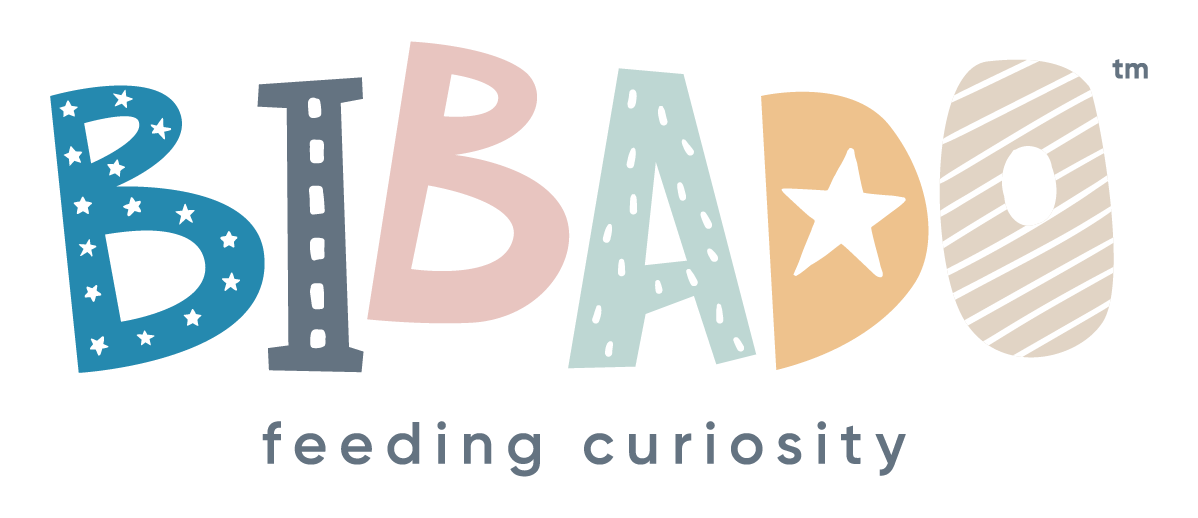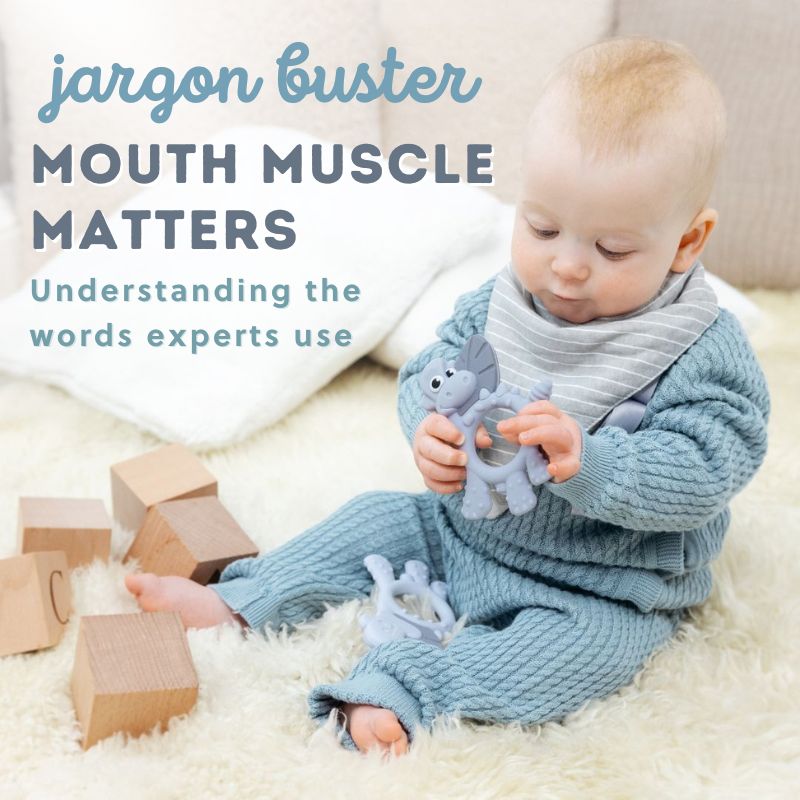Mealtime adventures are better with Bibado! Let our award-winning products make a difference to your weaning journey.
 Shop Now
Shop Now


Navigating parenthood is hard enough without a whole new vocabulary to get to grips with. Don’t let the tongue twisters stand in the way of your little one’s development! Use our handy jargon buster to understand the meaning behind the oro motor terms below.

In simple terms, this means mouth movement. It’s a term used, particularly in speech therapy, to refer to the movement and coordination of the muscles in the mouth, including the lips, tongue, and jaw, which are essential for functions like eating, drinking, and speaking.
This tongue twister describes the ability to move the tongue from side to side inside the mouth. It's an essential skill required for weaning as the tongue lateralises to manipulate food to be chewed and formed into a ball (or bolus) before swallowing.
Tongue movements mix and mash food into a ball or bolus, and then propel or push the bolus to the back of the throat ready to be swallowed
Typically front of mouth eating or nibbling. Most often demonstrated in babies as nibbling to take smaller bites of food.
Chewing using the molar teeth at the back of the mouth. Often known as the powerhouse of chewing, these teeth account for about 90% of chewing and are used to grind and break down food.
A chewing pattern that involves up-and-down and circular jaw movements. It's a milestone that babies usually develop between 9 and 12 months of age.
Gagging is a reflex action that helps to prevent choking. It can be triggered by fingers, food, a spoon or toys touching the back of the mouth. The gag reflex diminishes at around 6 months of age, coinciding with the age at which most babies are learning to eat solid foods.
Around 3-4 months, babies start "mouthing" objects, exploring textures and tastes, which further develops their oral muscles. Mouthing describes the repetitive action of babies putting things in their mouths, typically their hands and fingers.
The ability to bring the lips together to form a seal. This is particularly crucial during mealtime as it allows children to close their lips around a food item or tool like the Dippit, Sippit, or Handi Cutlery to receive nutrition.
Lip closure also plays a crucial role in the initial oral stage of swallowing, helping to contain food in the mouth, facilitate chewing, and ensure smooth transition of food to the throat by preventing leakage or premature food expulsion; essentially acting as a seal to control the food bolus before swallowing begins.
The ability to lift the tip of the tongue to the roof of the mouth at the front. It’s an important oral skill connected that allows a baby to create suction against the roof of their mouth, which is necessary for properly transferring food from the front of the mouth to the back for swallowing. It’s a pre-cursor to weaning that enables them to effectively manage solid foods and transition from a liquid diet.
Without proper tongue elevation, babies may struggle to move food around their mouth and could experience difficulties with choking or swallowing issues.
Follow us for more delicious, nutritious bite-size Bibado goodness